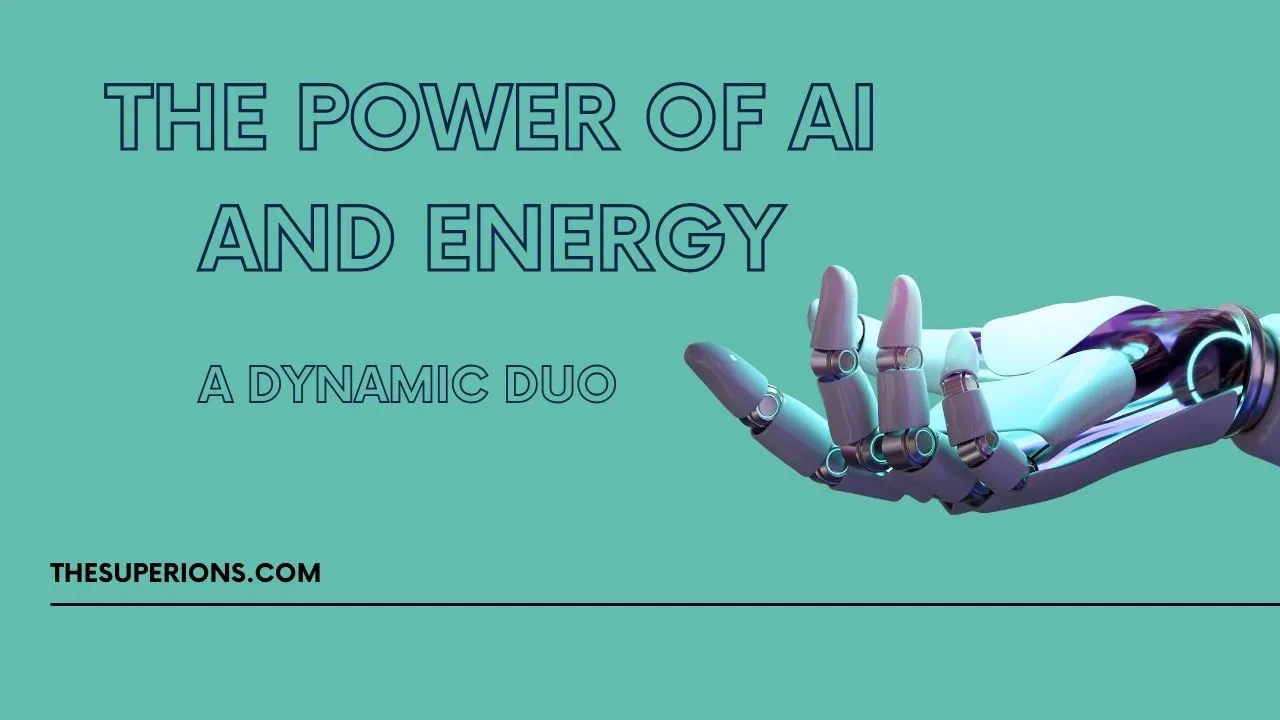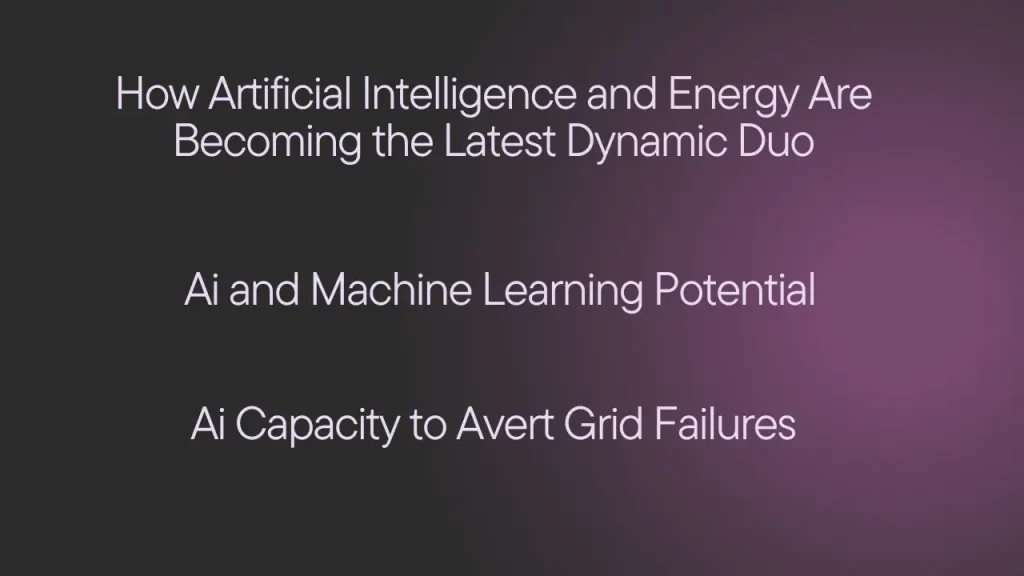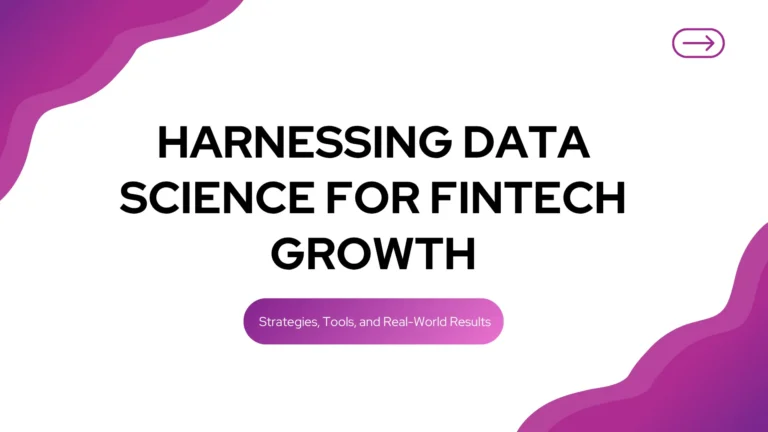How Artificial Intelligence and Energy Are Becoming the Latest Dynamic Duo
The complexity of power systems is swiftly escalating alongside the surge in electricity demand and the intensification of decarbonization efforts. In the past, grids merely acted as conduits for energy from centralized power stations. However, today’s power systems must adeptly handle multi-directional electricity flows among distributed generators, the grid, and end-users. The proliferation of grid-connected devices, from electric vehicle charging stations to residential solar installations, adds to the unpredictability of energy flows.

Simultaneously, deeper interconnections between the power system and transportation, industrial, and building sectors are emerging. This surge in demand for information exchange necessitates more sophisticated tools to plan and operate evolving power systems.
People Also Read?
This increasing demand coincides with rapid advancements in artificial intelligence application development services https://tech-stack.com/services/artificial-intelligence . As machine learning models evolve, the computational capacity required for their development has doubled every five to six months since 2010. Presently, AI models demonstrate reliable language or image recognition, convert audio signals into analyzable data, power chatbots, and automate routine tasks. By leveraging data analysis and inputs, AI mimics aspects of human intelligence, generating outputs swiftly and at scale. Some AI algorithms even showcase self-programming and code modification capabilities.
Given these advancements, it’s no surprise that the energy sector is leading the charge in leveraging AI to enhance efficiency and spur innovation. AI holds particular promise in bolstering the proliferation of smart grids and managing the vast volumes of data they generate. Compared to analog counterparts, smart meters transmit thousands of times more data points to utilities. Similarly, next-generation devices for monitoring grid power flows deliver an order of magnitude more data to operators. The global fleet of wind turbines alone is estimated to generate over 400 billion data points annually.
This data deluge underscores the pivotal role of AI in the energy sector. Current estimates suggest that AI serves over 50 distinct functions within the energy system, with the market for AI technology in the sector projected to reach up to USD 13 billion.
Ai and Machine Learning Potential
AI and machine learning have emerged as indispensable tools for enhancing the predictability of supply and demand in the energy sector. Precise forecasting of when renewable energy sources will be available and when demand will surge is paramount for the advancement of next-generation power systems. However, this task is inherently complex for renewable technologies due to their variable nature – the sun doesn’t shine consistently, and the wind isn’t always blowing.
Machine learning technologies offer a solution by effectively matching fluctuating supply with dynamic demand patterns. By doing so, they optimize the financial value of renewable energy and facilitate its seamless integration into the grid. For instance, wind power output can be forecasted using sophisticated weather models combined with turbine location data. Nonetheless, unpredictable variations in wind flow can lead to output levels deviating from expectations, thereby increasing operational costs.
To tackle this challenge, Google and its AI subsidiary DeepMind collaborated to develop a neural network in 2019. This neural network leveraged historical data to construct a model capable of predicting future output for Google’s 700 MW renewable energy fleet with unprecedented accuracy. By forecasting output up to 36 hours in advance, this AI-driven solution mitigated operational uncertainties and optimized the performance of renewable energy assets.
The enhanced visibility provided by AI has empowered Google to adopt a proactive approach to selling its power, enabling it to sell energy in advance rather than in real time. Google has reported that this strategy, coupled with other efficiencies facilitated by AI, has boosted the financial value of its wind power assets by 20%. This increase in revenue not only enhances the profitability of wind power but also strengthens the business case for investing in renewable energy sources. Notably, Google’s proprietary software, which enables these advancements, is currently undergoing pilot testing by a prominent energy company.
Moreover, armed with a more precise understanding of output peaks, companies like Google can strategically adjust the timing of peak consumption, such as during periods of heavy computing loads, to align with these peaks. This strategic alignment helps avoid the need to procure additional power from the market, thereby reducing operational costs. This capability, if implemented on a broader scale, could significantly promote load shifting and peak shaving practices – particularly when combined with improved demand forecasts.
People Also Read?
For instance, Swiss manufacturer ABB has developed an AI-driven energy demand forecasting application designed to empower commercial building managers. This application enables them to optimize energy consumption patterns, avoid peak charges, and capitalize on time-of-use tariffs. By leveraging AI insights, businesses can optimize their energy usage, reduce expenses, and contribute to a more sustainable energy ecosystem.
Ai Capacity to Avert Grid Failures
Another vital application of AI in the energy sector is predictive maintenance, a proactive strategy involving the continuous monitoring and analysis of energy assets’ performance to detect potential faults before they escalate. Traditionally, maintenance activities follow a predetermined schedule; for example, poles on a transmission line might undergo inspection within a set timeframe, and repairs are conducted as necessary. However, this standardized approach can result in inefficiencies if maintenance occurs prematurely or, more critically, too late.
To overcome these challenges, numerous utility companies are leveraging AI-driven solutions to monitor physical assets and predict maintenance needs based on historical performance data and outage patterns. For instance, utility giant E.ON has developed a sophisticated machine learning algorithm capable of forecasting the replacement time for medium voltage cables in the grid. This algorithm utilizes data from various sources to detect patterns in electricity generation and identify any anomalies.

According to E.ON’s research findings, predictive maintenance could potentially reduce grid outages by up to 30% compared to conventional maintenance methods. This innovative approach not only enhances asset reliability but also optimizes maintenance efforts, resulting in improved grid performance and operational efficiency.
Similarly, in 2019, the Italy-based utility company Enel embarked on a project to enhance its infrastructure by installing sensors on power lines to monitor vibration levels. Leveraging machine learning algorithms, Enel analyzed the data collected from these sensors to detect potential issues and determine their root causes. This initiative led to a remarkable 15% reduction in power outages associated with these cables.
Meanwhile, Estonia’s technology startup, Hepta Airborne, employs a machine learning platform combined with drone footage to inspect transmission lines for defects. Additionally, the State Grid Corporation of China extensively utilizes AI for various tasks, such as analyzing data from smart meters to identify equipment issues affecting customers’ energy supply.
Looking ahead, the potential applications of AI in power systems are poised to expand significantly. Beyond enhancing energy supply and demand forecasting and implementing predictive maintenance protocols for physical assets, AI could revolutionize various aspects of power grid management:
- Grid Management and Control: Utilizing data from sensors, smart meters, and other Internet-of-Things (IoT) devices, AI systems can monitor and regulate power flow within the network, particularly at the distribution level.
- Demand Response: AI technologies can facilitate demand response initiatives by forecasting electricity prices, coordinating response loads, and implementing dynamic pricing strategies to manage consumer demand effectively.
- Consumer Services Enhancement: Companies like Octopus Energy and Oracle Utilities are exploring the integration of AI and machine learning processes into apps and online chatbots to enhance customer billing experiences and offer personalized services.
These advancements hold the promise of improving grid efficiency, reliability, and consumer satisfaction, marking a significant step forward in the evolution of the energy industry.
Digitalization with Technology
Without the integration of AI, system operators and utilities will harness only a fraction of the potential benefits offered by emerging digital technologies, thereby missing out on significant opportunities. However, before scaling AI across the sector, it’s crucial to address associated risks. These risks encompass cybersecurity threats, privacy concerns, biases or errors in data, and the potential for miscorrelations resulting from inadequate training, data quality issues, or coding errors.
Moreover, the scarcity of skilled workers poses a substantial challenge for sectors seeking to leverage AI’s capabilities. Globally, the demand for AI and machine learning specialists is skyrocketing, creating a bottleneck in recruitment. As of June 2022, there were only 22,000 AI specialists worldwide across all industries, with 61% of large firms in the United Kingdom and United States reporting a shortage of staff with adequate AI expertise. To address this shortage, the energy industry must compete for top data scientists and programmers.
Additionally, companies seeking to retain employees with industry-specific knowledge should consider investing in upskilling and reskilling initiatives for their existing workforce. Digital training programs, supported by government initiatives and private sector collaboration, will play a pivotal role in addressing these workforce challenges. However, the availability and quality of such training courses vary across the world’s largest economies, highlighting the need for concerted efforts to standardize and enhance educational opportunities in this field.
AI’s energy consumption presents a significant challenge as the world strives for a more efficient energy system. Training a single AI model consumes more electricity than what 100 US homes collectively use in a year. Google reported in 2022 that machine learning activities accounted for approximately 15% of its total energy consumption over the previous three years.
However, there’s a lack of systematic data collection on AI’s energy usage and broader environmental impacts, highlighting the need for greater transparency and tracking, especially as AI models become more sophisticated. Prioritizing the deployment of the most energy-efficient computing infrastructure and AI algorithms is crucial to prevent AI’s energy consumption from offsetting efficiency gains.
Moreover, the proliferation of automated and self-learning software raises questions about accountability for the outcomes of AI systems. Operators often procure AI technology or services from IT companies and startups, leading to decision-making based on models they may not fully comprehend or control. This raises concerns about accountability for public spending, energy prices, and outage management.
People Also Read?
To address these concerns, the OECD AI Principles, adopted in 2019 by OECD member governments and many non-member governments, offer guidance on fostering a human-centric approach to trustworthy AI. However, clearer national, regional, and international frameworks may be necessary, given the energy sector’s critical role in the global economy and its significance for meeting climate objectives. For instance, the European Union’s proposed AI Act aims to establish better conditions for AI development and use while ensuring robust environmental protections.
For AI to effectively support efficient, decarbonized, and resilient power systems, governments must also develop mechanisms for data sharing and governance. A coordinated global approach can facilitate the creation of internationally applicable solutions, enable knowledge transfer, and accelerate the energy transition while minimizing its associated costs.





